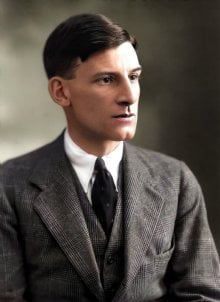Overview
Siegfried Sassoon’s Counter-Attack and Other Poems (1918) is a stark, unsparing portrait of trench warfare that dismantles patriotic illusions while defending the suffering humanity of ordinary soldiers. Written by an infantry officer who fought on the Western Front, the collection fuses eyewitness detail with bitter satire, moving between scenes of mud, gas, and shell-bursts and scorching portraits of the leaders and civilians who demand sacrifice from a safe distance. Its title poem anchors a sequence that ranges from narrative set pieces to tight epigrams, unified by moral outrage, compassion, and a commitment to plainspoken truth.
Context and Scope
Composed during and after Sassoon’s service on the Somme and at Arras, the poems emerged amid his public protest against the war’s prolongation. That lived immediacy gives the book its authority. Instead of abstractions, the poems return to dugouts, communication trenches, working parties, and dawn assaults. Men are named not as types but as comrades glimpsed under flares or carried on stretchers; victory is measured not in ground gained but in whether anyone survives to see daylight.
Themes
The central theme is disillusionment: the collapse of heroic rhetoric when confronted with bodies, fear, and futility. Sassoon exposes the distance between slogans and realities, targeting staff officers and well-fed civilians who mouth brave words while privates pay the price. Yet the collection is not merely denunciation. It mourns and honors the soldiers’ endurance, records fragile tenderness amid squalor, and notes the small salvations of humor, cigarettes, and shared silence. Memory and dream recur as counterpoints, pastoral recollections surface and are immediately blasted away by shells; nightmares intrude into waking life, suggesting a mind saturated by war. The poems also show how language itself falters under trauma, forcing a stripped, hard diction that refuses ornamental consolation.
Style and Form
Sassoon writes in taut, rhymed stanzas and flexible iambic lines that mimic drill and march while undercutting them with jolts of irony. He blends reportage with allegorical touches, but the dominant tone is sardonic realism. Satirical pieces land with epigrammatic force, while longer narratives build claustrophobic momentum through trench-level detail, abrupt line endings, and brutal verbs. The vocabulary is ordinary by design, forcing the horror to speak for itself and making the moral argument through understatement and juxtaposition rather than grand flourish.
Representative Moments
The title poem follows a unit through a confused counter-attack, tracing the collapse of order as maps and orders fail in the cratered waste. Mud suffocates, gas drifts, and command dissolves into instinct as men cling to shell-holes and wait for dawn that brings only more fire. In a companion piece of grim descent, a soldier gropes through a reeking tunnel and discovers that the “guide” he tries to rouse is a long-dead body, an image of modern war as a hell that mocks romantic underworlds. Satirical miniatures skewer the home front and high command: a breezy general’s cheery inspection preludes needless deaths; portly staff officers, safe at the base, pronounce harsh judgments on wasted youths; patriotic pieties are shown to thrive on distance from blood and mud. Elsewhere, elegiac lyrics dwell on comradeship, the tenderness of watching a man sleep before zero hour, or the stunned quiet after an attack when names are called and not answered.
Impact
Counter-Attack and Other Poems consolidated a new mode of war poetry: intimate, accusatory, and ethically grounded in witness. Its fusion of compassion with scorn reshaped public understanding of the Western Front, providing a vocabulary for disillusion that later veterans and readers carried forward. The collection’s stark clarity and moral steadiness remain its power, offering not a chronicle of battles won but a ledger of lives squandered and loyalties kept under the worst conditions modern war could devise.
Counter-Attack and Other Poems
A collection of war poetry written by Siegfried Sassoon that recounts his experiences during World War I.
Author: Siegfried Sassoon
 Siegfried Sassoon, a leading war poet known for his vivid WWI poetry and passionate anti-war stance.
Siegfried Sassoon, a leading war poet known for his vivid WWI poetry and passionate anti-war stance.
More about Siegfried Sassoon
 Siegfried Sassoon, a leading war poet known for his vivid WWI poetry and passionate anti-war stance.
Siegfried Sassoon, a leading war poet known for his vivid WWI poetry and passionate anti-war stance.